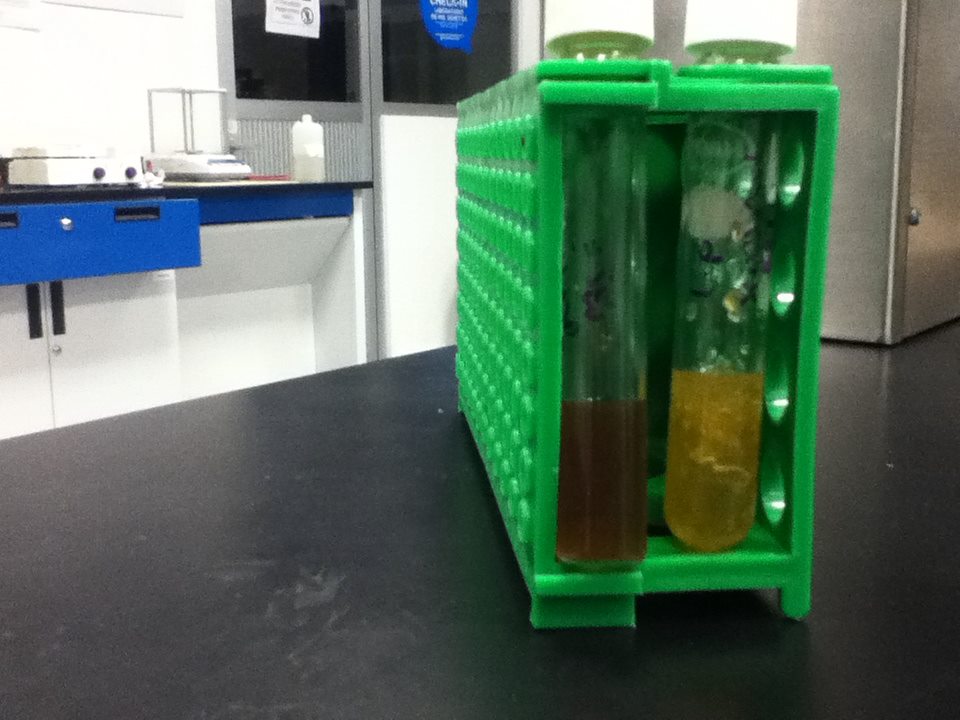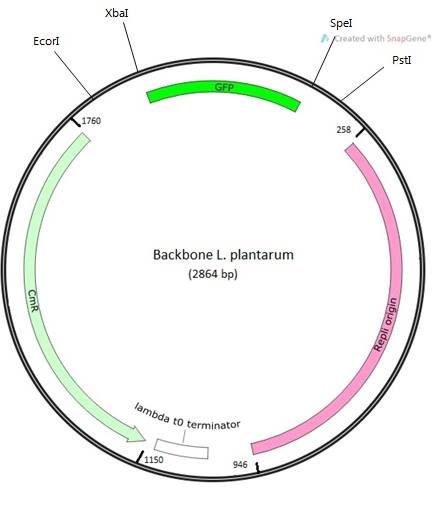Team:BIOSINT Mexico/Chassis
From 2013.igem.org
Chassis
Lactobacillus chassis
- This year the Biosint Mexico team will develope a smart probiotic. Throughout the competition several projects about probiotics have been present, nevertheless the main disadvantage was that most of them were not being created in a lactobacillus strain. Because of this we constructed a Lactobacillus platform for others iGEM teams.
L. plantarum?
- Lactobacillus plantarum is a gram-positive lactic acid bacterium, present naturally in dairy products, as well as in the gastrointestinal tract1.
- We chose to use L. plantarum as a chassis , because of its unique ability to grow and adapt to a large number of niches2. Studies have shown that L. plantarum has the capacity to optimize its genetic material in order to adapt to different environments, especially those with high levels of carbohydrates2. Another special property of L. plantarum is that it has a high tolerance towards acids, and it is present in many fermentative processes2.
- These characteristics among others make it a potential candidate for its use in different industries. Using recombinant DNA technology, this bacterium could be applied to food industries as a starter or marker in fermentative processes, in healthcare industry as a probiotic or in biofuel production2. As part of our project, we will be explore the potential of L. plantarum as a probiotic, and produce biobricks that can join all the beneficial properties of different probiotics and express it in our own chassis.
Backbones registry testing
- Before we tried to design a backbone compatible with the biobricks registry, we make experiments in order to know if some backbones in the registry was already compatible with a lactobacillus chassis.
- Tests for psB4K5, psB3K5, psB2K3, psB1A7 was made it. Unfortunatley we are not avaible to transform lactobacillus plantarum with any of the plasmids.
Vector design
- Using psb1c3 as template we design a new backbone compatible with E.coli and lactobacilli. In our case we used the bases of a staphylococcal plasmid, pUB110, that replicates by a rolling-circle mechanism via a single-stranded (ss) DNA intermediate in Bacillus subtilis and Staphylococcus aureus, and this mechanism is widespread among gram-positive bacteria . When pUB110 replicates in cells of B.subtilis or S. aureus, the plasmid regions, rep, ori, and BA3, function as a structural gene that encodes a replication protein.
- The BA3 minus origin has the ability to increase stability of the plasmid in its active host (7, 33), effects of palA and the IG region on plasmid stability were examined in L. casei MSK248.. These results indicate that palA and the IG region of M13 provide increased stability to the plasmids in which they have been incorporated in L. casei.
- We used the minus origin mention before and paste into psb1c3 in order to replaced the origin of replication that the vector actually have. We also add GFP to the plasmid, to measure transformation efficiency.
REFERENCES:
1Lee, J., Halgerson, J., Kim, J., and O’Sullivan, D. (2007). Comparative Sequence Analysis of Plasmids from Lactobacillus delbrueckii and Construction of a Shuttle Cloning Vector. [Online]. Retrieved from http://www.ncbi.nlm.nih.gov/pmc/articles/PMC1932812/ on April 16, 2013.
2Siezen, R. and Hylckama, J. (2011). Genomic diversity and versatility of Lactobacillus plantarum, a natural metabolic engineer. [Online]. Retrieved from http://www.ncbi.nlm.nih.gov/pmc/articles/PMC3271238/ on April 16, 2013.
 "
"





